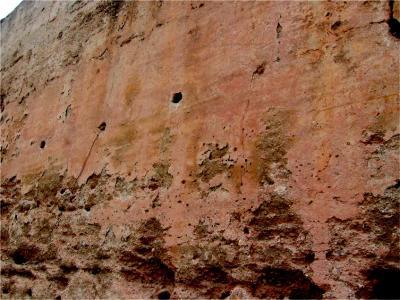The cast of "House" won't need to find new jobs any time soon but using a robotic assistant to remove a patient's gallbladder by key-hole surgery (laparoscopic cholecystectomy) was as safe as working with a human assistant, a Cochrane Review has concluded. Comparisons between robot- and human-assisted surgery showed that there were no differences in terms of morbidity, the need to switch to open surgery, total operating time, or length of stay in hospital.
It's not quite a "Book of the Dead" but a 14th century brick oven uncovered by archaeologists in Spain found a unique use for animal bones just the same - strengthening city fortifications. The scientists report that the animal bones were burnt in the oven and mixed with other materials to produce a protective coating that strengthened the grand medieval walls of what is today Granada, Spain. It must have worked pretty well since Granada and the surrounding territory were the last bastion of Islamic Iberia during that period.
In a study scheduled to appear in the Jan. 15 issue of Analytical Chemistry, scientists describe how they found these materials thanks to their new testing method.
In the first-ever study of food advertisements in UK magazines, researchers found them filled with sugary, salt-filled options often contradicting the health messages the articles were trying to put across. That means that women sitting down to enjoy some reading with their cup of tea and a chocolate bar may be tempted to an even unhealthier diet.
Newcastle University researchers collected and compared data on the nutritional content of the foods advertised in 30 most widely-read weekly magazines during November 2007.
A detailed nutritional analysis of the foods in the adverts found that the products advertised were generally much higher in sugar and salt, and lower in fiber than the World Health Organisation (WHO) recommendations.
Peter Doran, Associate Professor of Earth and Environmental Sciences at the University of Illinois at Chicago, wasn't all that happy that his Nature paper(1) was widely used by detractors of early 2000s global warming theory so he set out recently to find out just how many other earth scientists believe in human-induced climate change.
His research then found that some parts of Antarctica had cooled between 1986 and 2000 so he was lumped in with those disputing global warming, something he did not say. Doran found out, just as Bill Gray later would when he disputed Al Gore's contention that global warming caused Hurricane Katrina, when you go up against crazy people with an agenda life can get ugly.
NGC 253 is one of the brightest and dustiest spiral galaxies in the sky but we are always learning new things about it. Astronomers using the Very Large Telescope's (VLT) near-infrared eye called NACO, an adaptive optics instrument, are now saying that the center of NGC 253 hosts a scaled-up version of Sagittarius A*, the bright radio source that lies at the core of the Milky Way, and which we know harbors a massive black hole.
"We have thus discovered what could be a twin of our Galaxy's Centre," says co-author Almudena Prieto, part of the group of astronomers from the Instituto de Astrofísica de Canarias (Spain) and lead author of a new paper on the topic, which also disclosed a group of new young, massive and dusty stellar nurseries there.
A review article published in the European journal Psychotherapy and Psychosomatics says there is a relationship between depression and bone metabolism.
The study says that the association between psychiatric illness, in particular depression, and osteoporosis has been the subject of a growing body of research yielding various findings, although most identify some effect on bone. In addition to medication-related processes and/or modifiable lifestyle factors associated with mood disturbances, endocrine and immune alteration secondary to depression may play a pathogenetic role in bone metabolism.
 Opioid Addicts Are Less Likely To Use Legal Opioids At The End Of Their Lives
Opioid Addicts Are Less Likely To Use Legal Opioids At The End Of Their Lives More Like Lizards: Claim That T. Rex Was As Smart As Monkeys Refuted
More Like Lizards: Claim That T. Rex Was As Smart As Monkeys Refuted Study: Caloric Restriction In Humans And Aging
Study: Caloric Restriction In Humans And Aging Science Podcast Or Perish?
Science Podcast Or Perish?








